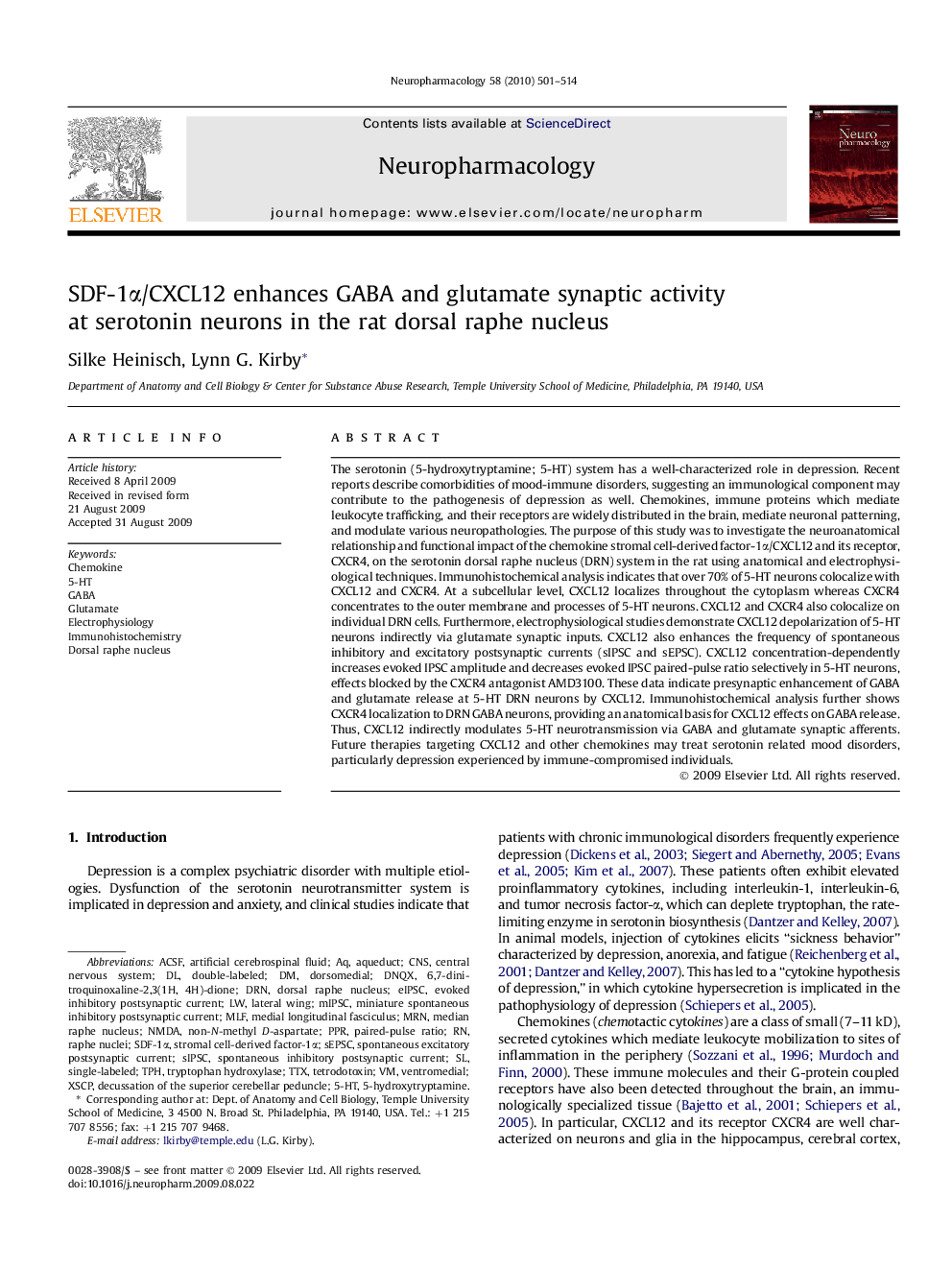| Article ID | Journal | Published Year | Pages | File Type |
|---|---|---|---|---|
| 2494334 | Neuropharmacology | 2010 | 14 Pages |
The serotonin (5-hydroxytryptamine; 5-HT) system has a well-characterized role in depression. Recent reports describe comorbidities of mood-immune disorders, suggesting an immunological component may contribute to the pathogenesis of depression as well. Chemokines, immune proteins which mediate leukocyte trafficking, and their receptors are widely distributed in the brain, mediate neuronal patterning, and modulate various neuropathologies. The purpose of this study was to investigate the neuroanatomical relationship and functional impact of the chemokine stromal cell-derived factor-1α/CXCL12 and its receptor, CXCR4, on the serotonin dorsal raphe nucleus (DRN) system in the rat using anatomical and electrophysiological techniques. Immunohistochemical analysis indicates that over 70% of 5-HT neurons colocalize with CXCL12 and CXCR4. At a subcellular level, CXCL12 localizes throughout the cytoplasm whereas CXCR4 concentrates to the outer membrane and processes of 5-HT neurons. CXCL12 and CXCR4 also colocalize on individual DRN cells. Furthermore, electrophysiological studies demonstrate CXCL12 depolarization of 5-HT neurons indirectly via glutamate synaptic inputs. CXCL12 also enhances the frequency of spontaneous inhibitory and excitatory postsynaptic currents (sIPSC and sEPSC). CXCL12 concentration-dependently increases evoked IPSC amplitude and decreases evoked IPSC paired-pulse ratio selectively in 5-HT neurons, effects blocked by the CXCR4 antagonist AMD3100. These data indicate presynaptic enhancement of GABA and glutamate release at 5-HT DRN neurons by CXCL12. Immunohistochemical analysis further shows CXCR4 localization to DRN GABA neurons, providing an anatomical basis for CXCL12 effects on GABA release. Thus, CXCL12 indirectly modulates 5-HT neurotransmission via GABA and glutamate synaptic afferents. Future therapies targeting CXCL12 and other chemokines may treat serotonin related mood disorders, particularly depression experienced by immune-compromised individuals.
